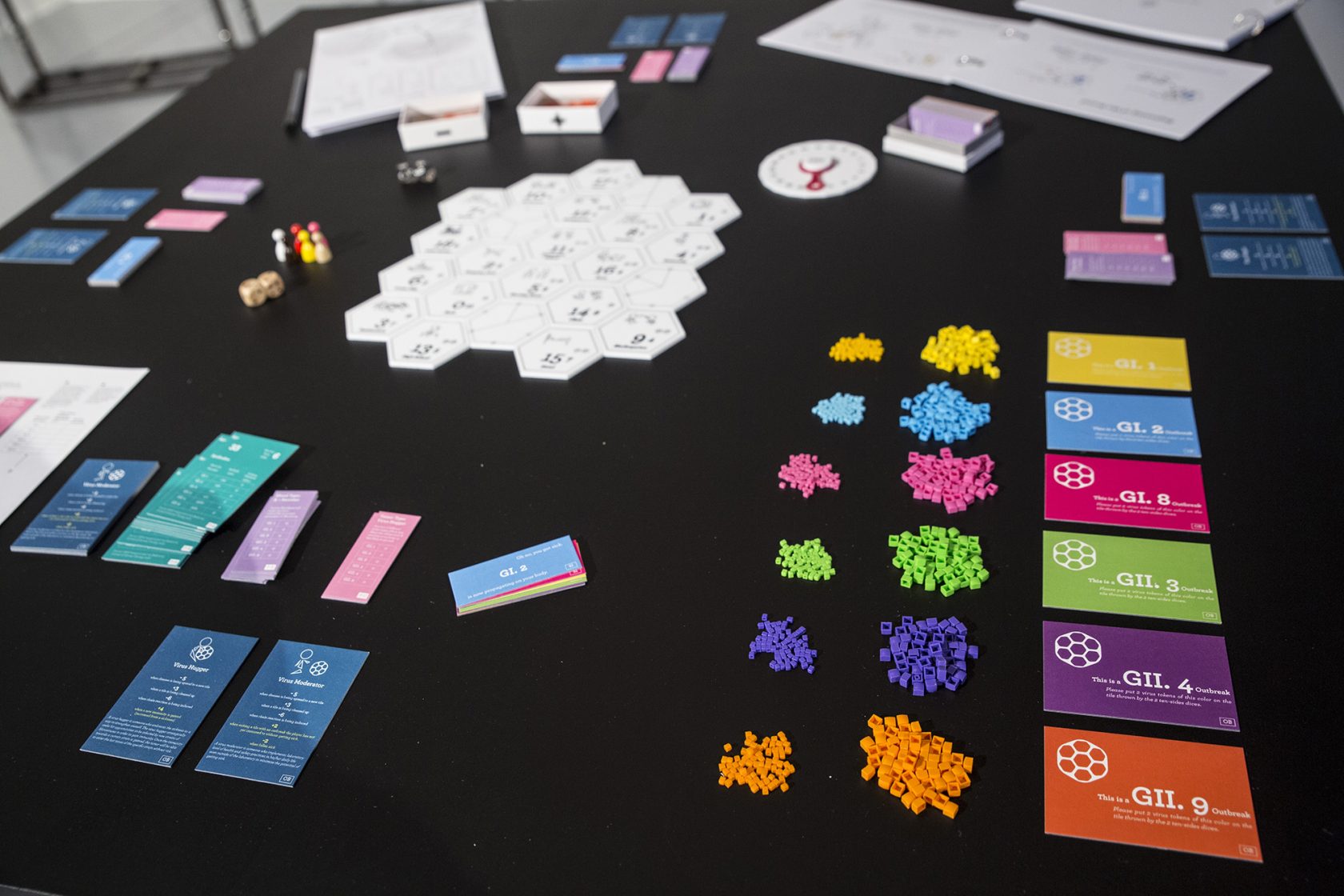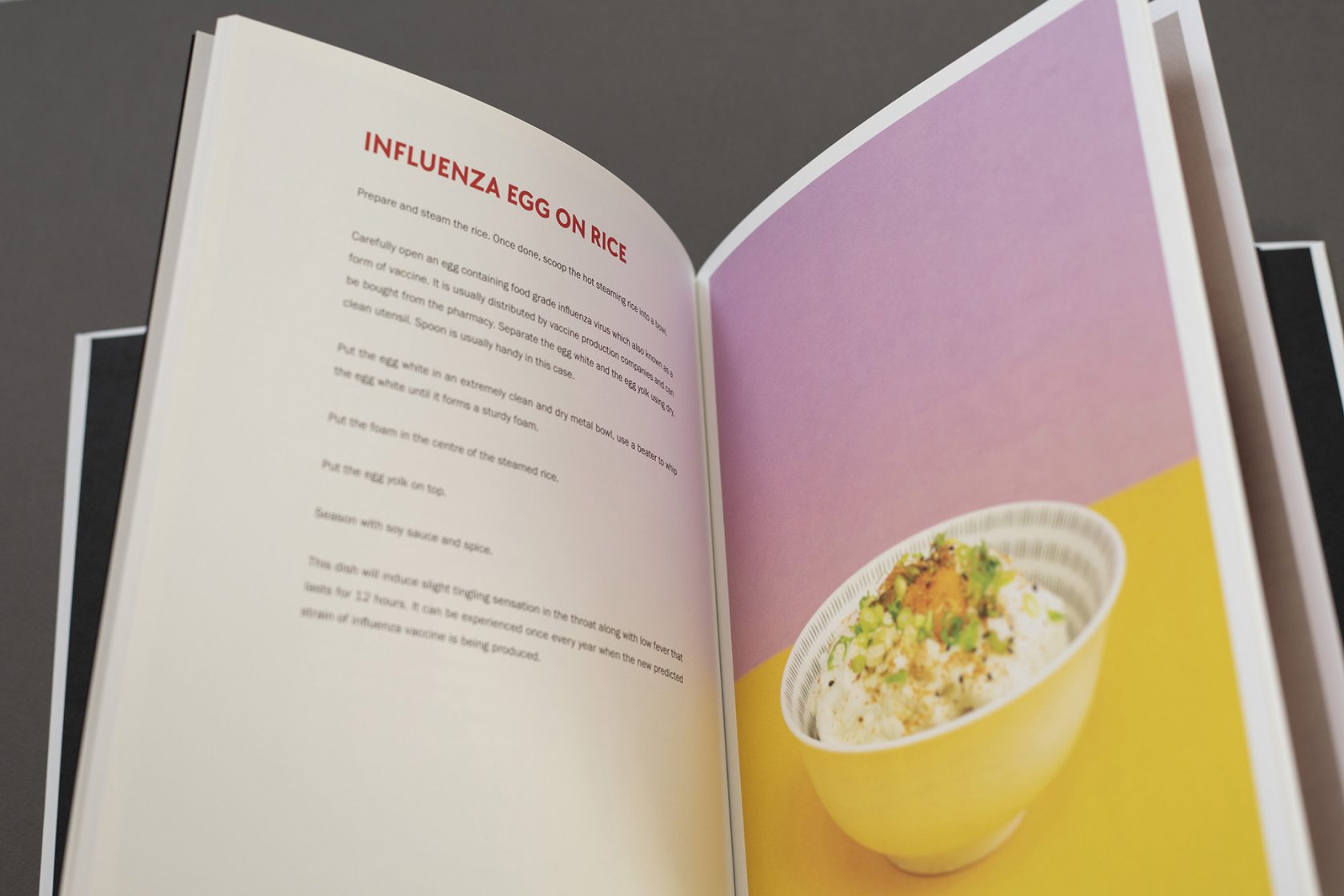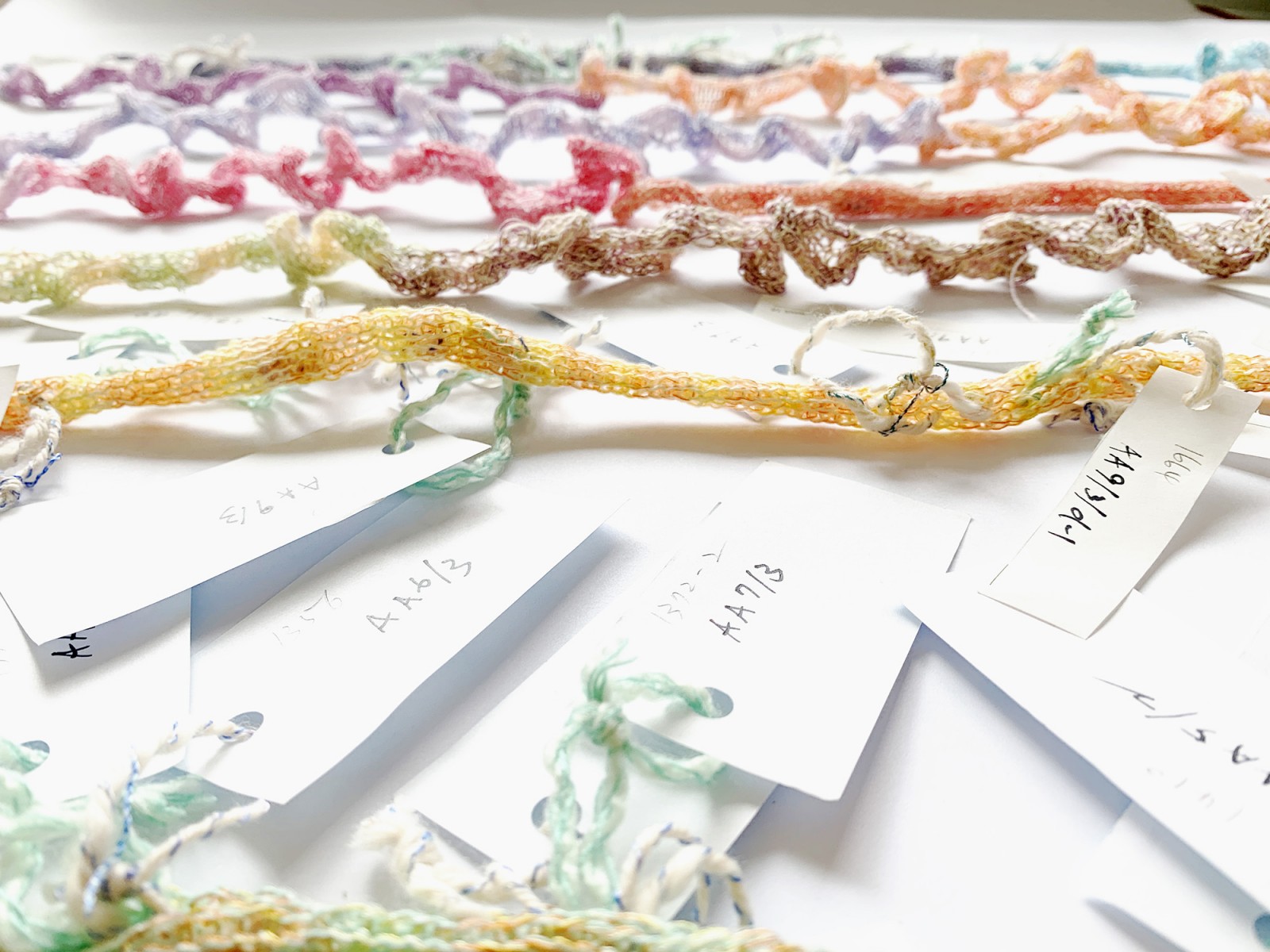Meet iii resident Pei-Ying Lin
Pei-Ying Lin is an artist / designer from Taiwan and currently based in Eindhoven. Her main focus is on the combination of science and human society studies which she investigates using artistic methods. She is interested in building a common discussion ground for different cultural perspectives in relation to elements that construct our individual perception of the world. She has a bachelor degree in Life Science (National Tsing Hua University, Taiwan) and a masters degree in Design Interaction from the Royal College of Art (London, UK).

How did you start within the field of science to eventually finally end up in the art scene?
I think it is because back when I was a student studying Life Science and I was trying to understand all the science from my textbooks, that I also started to become interested in the other departments at the university. The reason for that is that I noticed that they all are looking at the same problems, but each with a different approach. It was looking for the right tool that could answer questions from different perspectives that interested me the most. So I started to study design instead of going down a strictly scientific path and use the action of making artifacts to investigate the relationship between humans and technology. Usually people think of design as a way to solve specific problems, but within the field of speculative design you use design as a way to study how humans behave. It drags in a lot of topics such as new technologies and new scientific discoveries. New things are discovered all the time but a lot will only exist in the form of a scientific article. For the general public it is hard to imagine what the impact of these things are and speculative design is a methodology to investigate this. Even so, I am generally more of an artist than a designer art and my projects are being categorized in the art realm than the design realm.. I try to create interesting sides to these discussion, with an edge of craziness.

Currently you are doing a project investigating the relationship between viruses and humans, which is quite a topic nowadays. How did that come to be?
This goes back a long way and just so happens to coincide with the pandemic. But already back in 2010 I was doing a project which related to viruses and as part of my Bio Art and Design Award 2016, I got to collaborate with a scientist from the Erasmus MC. We were working with the norovirus at the time and playing around with ideas of how we could coexist with the virus. So I came up with Virus Tamers, which looked into ways to try and find out if we can treat the viruses, which are not likely to be eradicated, as if they are wild animals and build a controllable bond with them. In other words; to try and tame them. Then in 2018 I started the project Virophilia. Which got started when I was looking into viruses and their functions and seeing how technology has allowed us to manipulate and deal with them. Unlike what people generally think, especially now, there can be mutually beneficial relationships between humans and viruses.
In biological definition, viruses, unlike bacteria, are not considered ‘living’. It is due to the fact that viruses themselves are not equipped with the essential components that can facilitate their replication. In other words; viruses cannot replicate themselves. They are doomed to be the ‘parasites’ on living creatures, and humans are one of them. When viruses borrow our cells as their replication factories, our body system becomes unstable, our body immune system reacts, and at the macro scale we get sick. Though the interaction is much more sophisticated than how we commonly understand.. and actually not all viruses are pathogens. New discoveries of beneficial viruses are starting to reveal that some are even crucial for our survival. The amount of viruses surrounding us also vastly outnumber what we have known now. To make it short, humans and viruses depend on the existence of each other.
With this in mind, Virophilia is a cookbook and an installation with videos and dinner performances which adapts to different exhibition formats. It is written in a retrospective way as it is set in a time 50 years from now and looks back at the current time. It has five different chapters that work with viruses in different ways. Chapter one is about creating a feverish sensation as a way to extend the pleasure of eating. The second chapter uses viruses to ferment food. The third chapter is about using viruses as an active ingredient in food. Chapter four is about using viruses for controlling a soup of sorts. The thing about them is that viruses are very good at targeting specific things. Finally, chapter five is about designing a cuisine that would be pleasurable for everyone in the food chain.
So as someone whose work a lot around the subject of viruses these must be really interesting times for you right now?
Yes, I have been dealing with viruses a lot and one of the first things I realised is that people understand viruses as something evil or they see them as enemies. But more and more I have learned that viruses are actually neutral. The situation of this pandemic is one that is mostly about the human reaction rather than the actual virus. The evil or unbearable part of it all is triggered by the reaction of the human body as they cannot endure the infection and die because of that. It is the human reaction to this situation that defines this pandemic. If you look at viruses without any cultural connotations they are actually neutral in the whole scheme of things and we are just paying attention to the negative side of it. I realised that as individuals we all have our own personal parts to play within the pandemic and that most people believe we are behaving rationally, which is largely guided by information that comes from the “scientific” side of the government. Even though if you look at it from a scientific point of view, a lot of what the government claims as science, is not really science.. In science you would be looking at things and only claiming things that have been proven while maintaining the humble attitude that this can also be disproven at any point in time. That humble attitude however does not work when you want to make policies. This is also why I think we need a cultural platform to allow space for an individual understanding of things and should also take the positive side of how science enables us to understand things.
Right now for the residency I am trying to create rituals that would allow you to “talk” to the virus. Which of course isn’t really talking to the virus directly but more a way to adjust ourselves in a way that would allow us to feel that we can say whatever we want to the virus. Right now we are only complaining about the virus and it is frustrating to me that the coronavirus exists mostly as a concept and that people don’t know how to handle such abstract concepts.


So how will the ritual allow you to talk to the virus?
It relates to this idea of micro performativity, which is something that is often talked about in the bio arts realm. If you look at the microscopic level of things for example, cells are always moving; they are forming things, transforming their shapes or creating things. We cannot see this with our own eyes, so what often happens when you are studying these things is that people almost have a type of animation in their mind to understand the mechanism behind all these actions of the microorganisms. The translation of these thoughts is quite interesting because it brings it back all to a human scale. That’s why I was trying to find similarities between the way that the RNA of viruses get replicated and something we do in normal life, which led me to the act of knitting. In many ways the act of knitting is a very accurate embodiment of that RNA replication process that happens in our bodies when we get infected with a virus. It doesn’t only mimic that particular process but also the way that we get tired when we are infected with a virus. It takes a lot of work for our bodies to make the proteins that the virus requires and that’s why we get tired. Knitting shows just how much work this process takes as well how tiring it can be since knitting can be a lot of work. Knitting quite naturally allows for a lot of chatting to happen, which creates a platform that allows us to talk and share ideas. So during the knitting sessions I will have questions for people to answer while they are knitting. I am hoping to create a few gatherings in real life and online. I have an Open Call going on for that right now.
For the project I have the help from a textile designer and scientist in order to see what the crucial characteristics of the virus are and how we could translate this into knitting. Like, when is there too much detail and what part is actually important? The collaboration is extra nice as well in this case as it turns out that the limitations of trying to replicate the virus with the use of needle and thread are pretty similar to problems you would come across with when you are trying to make a 3D model of the virus. What they try to do when they analyse a virus, is to sequence the proteins that they are made out of, however they don’t actually know the exact shape of things. With the data they have it will say for example that there is a sheet and a helix but not how they are shaped or connected. So even though the proteins are defined, there are still a thousand ways to shape them. With 3D modeling they are trying to create every single model of protein under all kinds of different conditions, which is a lot less intuitive than when you work with thread.
Will you only be hosting knitting sessions during these gatherings?
There will also be two performances, one of which includes a shamanic dancer. Most of the performance part will be done at iii as they have a really good space and the tools for all of this. Every performance will be in multiple parts and in the first part of the performance the shaman will go out to sample the virus and invite it to come and talk to us. It is a way to sample things in a spiritual way as it were. The collected samples will also be sent to the lab to see what actual viruses were sampled. It would be interesting to see if the environment is actually safer than we would expect it to be. But maybe there won’t be any viruses in the sample at all, that is a possibility as well. This performance is a way as well to sample how our actions will be changed simply by having an action in our mind.
During the second part of the performance the dancer will try to become the virus by trying to wear all the knitting we have made together. The dancer will knit all the bits together using the body. Interestingly enough, the dancer actually has a background in shamanism so I am curious to see her interpretation of all of this. Rather than giving very strict and detailed instructions for all of this, I am just giving a protocol for movements. The whole thing is a big experiment that will also look into the cultural side of things. Say that we have a very well defined protocol and execute this within different cultural settings, things will be transformed completely. I might also have another dancer in Taiwan that will perform the same protocol but in different ways. She is actually a scientist and a researcher so I am curious to see her interpretation as well. We all have seen during this pandemic how different cultures react differently to the same thing. That’s why I am writing protocols instead of very set performances.

Is all of this also a way to educate people more about viruses?
No, education is more in the background. To educate sounds like there is an authority and in this context there is none. I am not a virologist and I cannot guarantee the best and most updated knowledge of things. I am just inviting people to explore things together with me. The funny part about these collaborations is that in the end we talk a lot about the pandemic. You notice how people see things differently and how people sometimes get frustrated. For example, since last week Taiwan suddenly is having 200 to 300 corona cases per day. They are officially entering the pandemic even though they had managed to fight it off for a long time. So now the mentality over there is similar to how we were last year over here; lot’s of speculation and fear. But I am happy to notice that within my project and between my collaborators there is a lot of space to talk about this. People feel free to share their frustration and that all eases things a bit, which is really important.